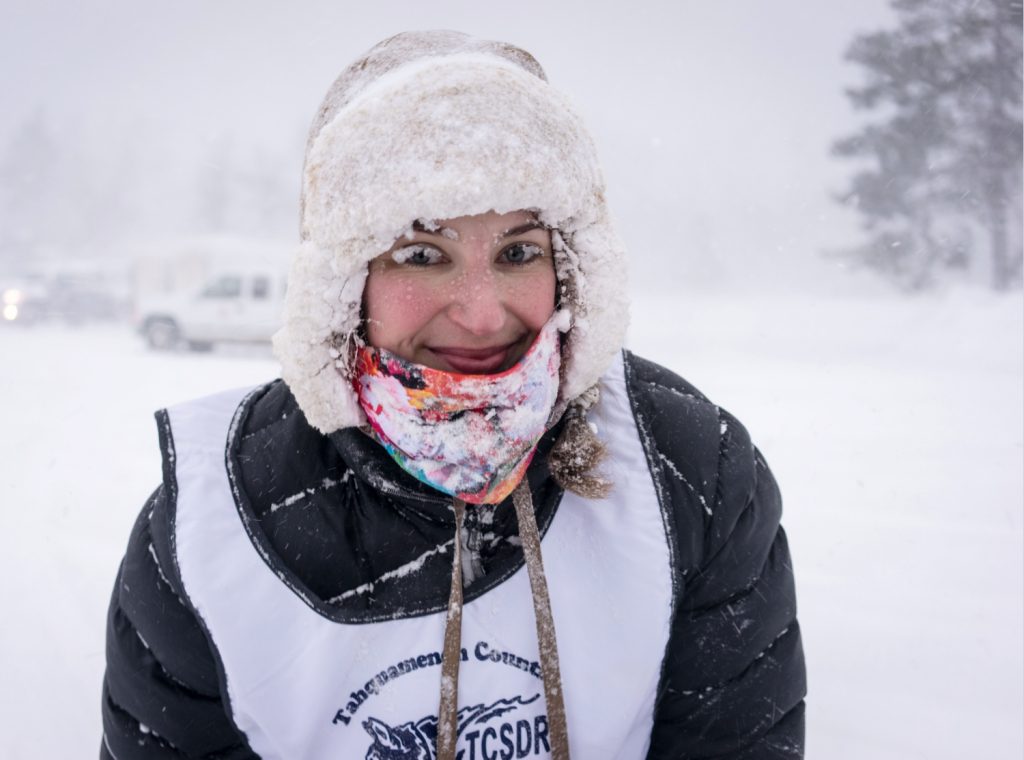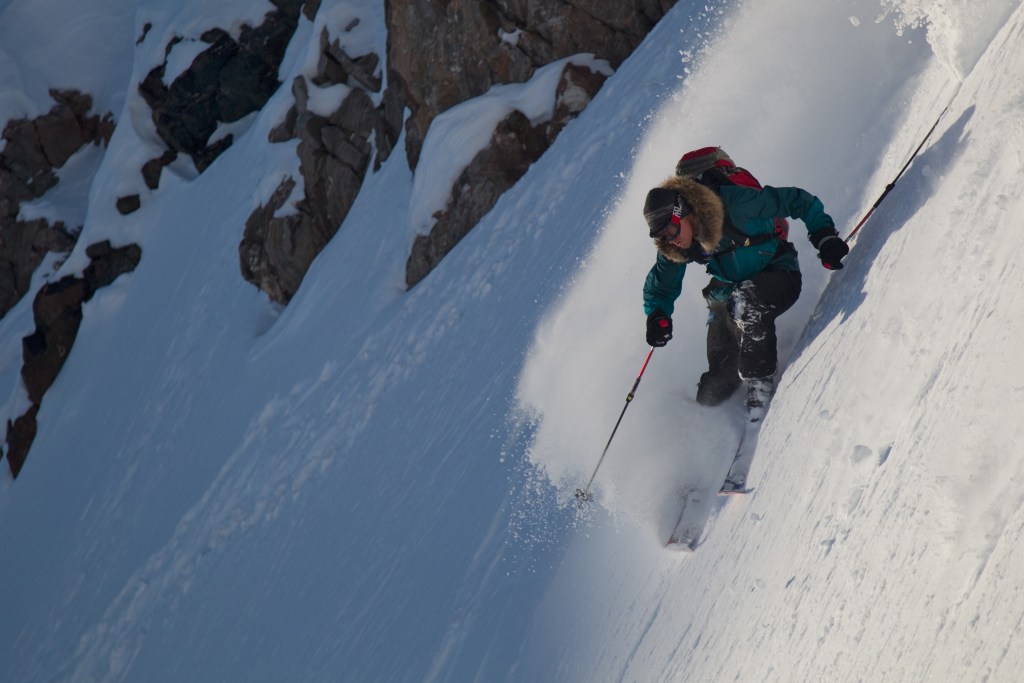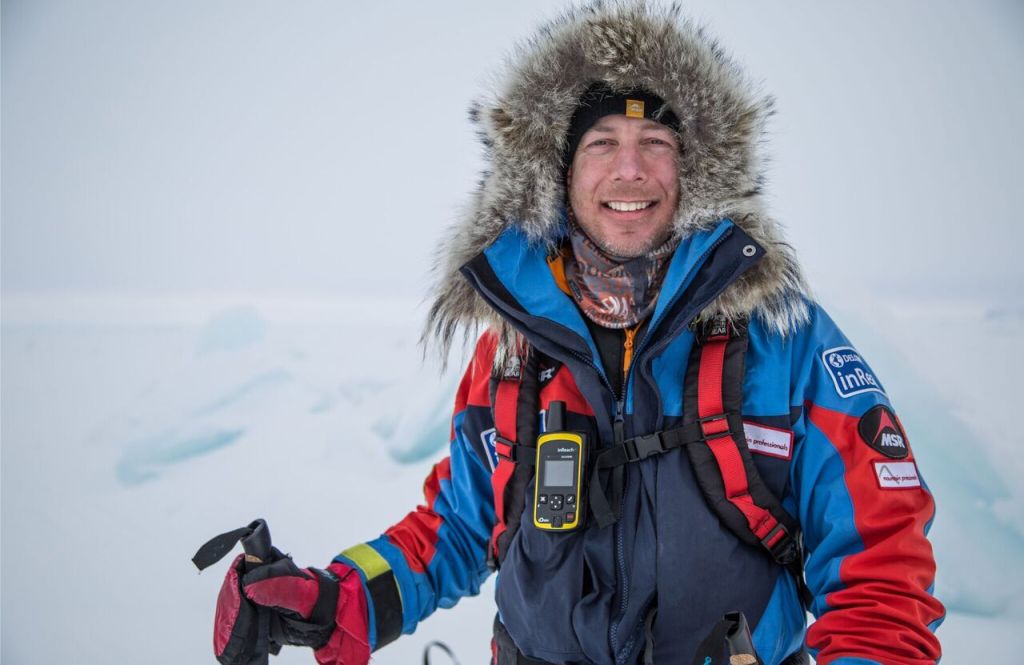For most of us, training for winter sports (if we do it at all) is a fall thing, but these snow hounds have been hauling tires, pedaling long distances and bagging peaks with weighted packs for months to prep for their upcoming arctic adventures.
As temps plummet with the change in seasons, athletes who live winter-oriented lifestyles are getting stoked for snow. But without the frosty layer on the ground through the summer months, and if they’re not voyaging to somewhere cold all year-round, they have to get crafty to simulate conditions to maintain endurance. These four cold-weather warriors share their best and weirdest training secrets—and the goals they’re training for.
Blair Braverman
Dogsled racer and nonfiction writer

Known for: Her memoir about learning to dogsled, Welcome to the Goddamn Ice Cube, and her Outside magazine column on love
Home base: Mountain, Wisconsin
Offseason: Mid-March to early October
Training: For Braverman, training is about keeping her team of dogs in peak shape—and making sure they log enough R and R. Just when sled dogs are in the best shape, with the highest amount of energy running hundreds of miles, the sledding season ends, which makes springtime a miserable time of year for a dogsled racer, she says. Yet there’s something about months of rest that positively affects their athletic ability, and running them when it’s more than 50 degrees puts the dogs in danger of overheating. The warmer break gives the 29-year-old racer and nonfiction writer the time she needs to sort and replenish equipment, work out her own muscles or coach dogs one-on-one. While some mushers build jungle gyms in their backyards or teach their dogs to chase after boats, Braverman lets her pack run free across her farmland. And anytime she travels within 10 miles of home, she has two dogs pull her on a scooter. “If you have a sled dog that would normally run for 10 hours a day and suddenly they’re not, they’re going to find ways to use that energy,” she says. “We’ll take 10 dogs at a time hiking and they just sprint in manic circles around us because sled dogs think it’s the best fun ever.”
Goals this season: Braverman has her eye on the Beargrease, a 400-mile dogsled race through Minnesota’s Sawtooth Mountains in January. She also aims to qualify for the March 3 Iditarod Trail Sled Dog Race, which stretches 1,000 miles through Alaska and is often called “The Last Greatest Race.”
Doug Stoup
Arctic leader with his company, Ice Axe Expeditions

Known for: Skiing to the North Pole 16 times and the South Pole 16 times, more than anyone on the planet
Home base: Lake Tahoe, California
Offseason: June and July
Training: Pushing the limits of human endurance, 53-year-old Stoup tailors his training to whichever wintry destination is on the horizon, and he puts his Ice Axe clients through similar strengthening regimes. Stoup is either zenning out with yoga, biking great distances, hauling weight in a pack before ski touring or pulling tires up 9,000 feet in Squaw Valley before a polar expedition. But SUPing stands out as his favorite way to test his balance, core, endurance and meditation. The time alone on the water mimics the long periods of introspection and solitude Stoup says he finds on polar expeditions. He says over the years, his focus has shifted to be less about his own goals and more about helping mankind and other people through charities, education and leading others on trips of a lifetime. The mountain man, who has a simultaneous love for water, once took a 77-mile SUP journey around Lake Tahoe in 16 hours. “I would never want to show up for something and say, ‘Wow, I should’ve trained a little harder,’” he says. “I want to be prepared, and preparation and planning is the key to success.”
Goals this season: Stoup aims to complete his first exploratory ski cruise aboard a private mega yacht to Chile’s Darwin Range for 15 days in December 2017.
Hadleigh Measham
Expedition leader with Seattle-based Quark Expeditions

Known for: Voyaging to unchartered fjords and historic villages in Northeast Greenland
Home base: The Chiltern Hills of England
Offseason: Typically mid-March to late May
Training: For most of the year, Measham is confined to a ship and surrounded by dozens of people feeding their hunger for exploration of cold places. Peak physique isn’t a requirement for his job, he says, since he’s focused on coordinating the logistics of trips, keeping an eye on weather conditions and ensuring Quark clients are pleased. Measham has ventured on more than 50 expeditions to Antarctica, Svalbard, the Falkland Islands, East and West Greenland and Baffin Island. But off the rocking vessel, downtime allows the introvert to replenish his mental state because he’s finally not around people. His training requires more planning on paper and dreaming up outlandish excursions. He also uses his free time for diving and alpine mountaineering, and the room on land to stretch and strengthen his sea legs on solid ground. “I like to run in the evening before dinner in the woods,” he says, adding that he’s more of a sprinter than a long-distance runner and adds weights into the mix. “I’m never around anything green because I’m usually in the polar region.”
Goals this season: He has provisions to view the Northern Lights in the dark on land somewhere unexplored in northeast Greenland this autumn—considered an industry feat because of the dangers and uncertainty off the boat, but one he accomplished once last year in Gåsefjord in East Greenland.
Eric Larsen
Polar adventurer

Known for: Being the first person in history to reach the world’s three “poles” (North Pole, South Pole and Mt. Everest) within a 365-day period—and for being a fun dad, according to his two kids
Home base: Boulder, Colorado
Offseason: June through mid-September
Training: This summer, the 46-year-old hunkered down in Colorado’s wildflower-spotted Crested Butte for a heavy dose of mountain biking in preparation for upcoming bike adventures. Among them, a 650-mile bike, hike and paddle trip requiring 12-hour days across the Rockies this October. He also fit in time for a summit of the 14,255-foot Longs Peak with Big City Mountaineers. Sweating it out in summer revolves around routine and schedules. Saturdays are designated for high-intensity bike or hike trips and Sundays are for shorter trips, plus strenuous workouts. Weekdays he tosses in a few workouts when he’s not with family His exercise routine centers around maintaining a base level of fitness by road and mountain biking, hauling a weighted pack up peaks with more than 1,000 feet of elevation gain, trail running and pulling tires tied around his waist to copy the stress of sleds piled with gear. “I find that as I get older, I get out of shape more quickly and it takes me longer to get back into shape,” Larsen says.
Goals this season: A winter scouting mission to Iceland in December, polar training in Canada’s Winnipeg in January, winter fat biking in the Gobi Desert in February and a North Pole expedition in April are all on Larsen’s calendar.
